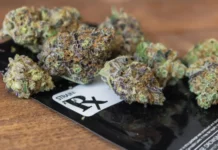On Thursday, an advisory panel to the U.S. Food and Drug Administration voted its support for the first marijuana-based drug, a treatment for two rare forms of epilepsy in children. As a cannabis-derived medicine moves closer to full FDA approval, some people think marijuana has that potential to make an even bigger contribution to public health: turning back the opioid epidemic.
Studies conducted at the state level show that expanding access to medical marijuana is correlated with lower rates of opioid misuse and overdose. Yet studies of individuals show that using medical cannabis is correlated with higher rates of using and misusing opioids. This set of conflicting research has revealed less about the relationship between marijuana and opioids than it has about how science is misunderstood and misused in political debates.
It’s understandable when looking at the research on medical marijuana and opioids to think that the state and individual level studies are inherently contradictory. But just because two variables have different relationships to each other at the individual level and at the aggregate level doesn’t mean that either finding is wrong. For example, a famous study conducted in 1930 showed that states with more foreign-born residents had higher rates of English-language literacy, even though foreign-born individuals were less likely to be literate than U.S.-born individuals. The seeming contradiction came about because foreign-born residents tended to settle in states with higher rates of English language literacy.
The math underlying why many such apparent contradictions exist across scientific research areas is complicated, but the underlying point is simple: We can’t know what’s happening to individuals by looking just at state data (or county or city data), and we can’t know what is happening to states just by looking at individuals. Thus there isn’t any logical contradiction between marijuana and opioid use having opposite relationships at the state and individual level.
The other statistical point of relevance here is more widely understood: Just because two things are correlated doesn’t prove there’s a causal relationship between them. However, in this particular domain, people tend to apply that rule only to the subset of studies that conflict with their views on marijuana. Sometimes this is a conscious decision by people who want to spin the evidence, but more often it reflects unconscious, built-in flaws in human reasoning that make us more prone to attend to and trust evidence that confirms what we already believe or deeply want to believe. That is, people who hold anti-marijuana views will be more likely to accept the individual correlational studies as proving that medical cannabis is harmful and dismiss the state-level studies as “merely correlational.” Those with positive views of marijuana will do the reverse.
Being human, scientists also sometimes fall prey to the same problem, being too critical of marijuana studies that don’t accord with their beliefs and not critical enough of those that do. But at their best, scientists design rigorous studies of important questions and then accept the answers whether they (or anyone else) likes them or not.
Solving the puzzle of whether and how medical cannabis and opioids interact will require laboratory experiments and randomized clinical trials in which researchers can control exposure to both drugs rather than relying on correlational data. In one recent such study, Ziva Cooper of Columbia University found initial evidence that marijuana may modify both the pain-relieving effects and abuse liability of oxycodone.
More studies like Cooper’s are needed and should become more common if Congress is wise enough to loosen restrictions on medical marijuana research. In the meantime, the medical marijuana debate will rage on, with many people on each side citing as authoritative whichever study suits their purposes.














